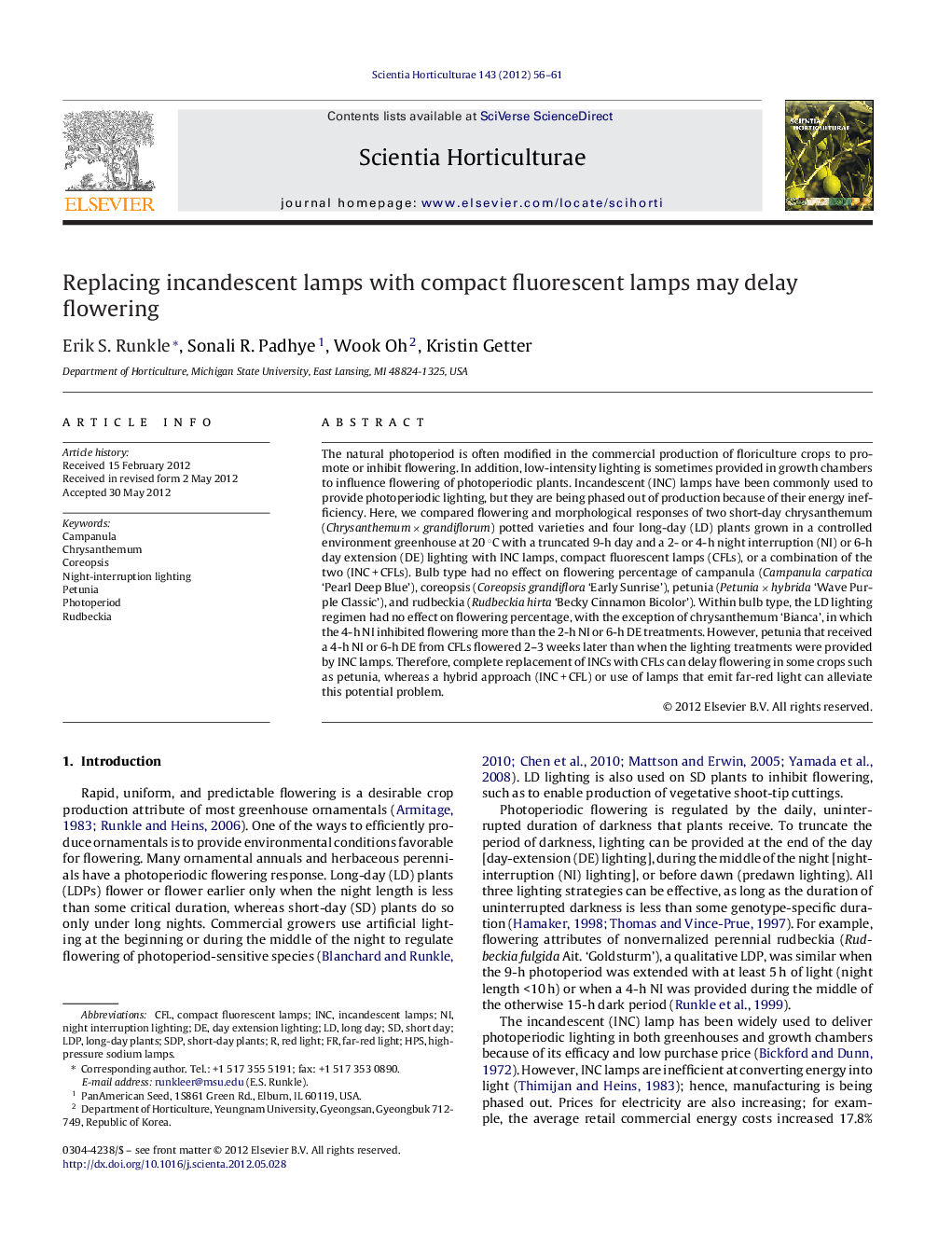| Article ID | Journal | Published Year | Pages | File Type |
|---|---|---|---|---|
| 4567614 | Scientia Horticulturae | 2012 | 6 Pages |
The natural photoperiod is often modified in the commercial production of floriculture crops to promote or inhibit flowering. In addition, low-intensity lighting is sometimes provided in growth chambers to influence flowering of photoperiodic plants. Incandescent (INC) lamps have been commonly used to provide photoperiodic lighting, but they are being phased out of production because of their energy inefficiency. Here, we compared flowering and morphological responses of two short-day chrysanthemum (Chrysanthemum × grandiflorum) potted varieties and four long-day (LD) plants grown in a controlled environment greenhouse at 20 °C with a truncated 9-h day and a 2- or 4-h night interruption (NI) or 6-h day extension (DE) lighting with INC lamps, compact fluorescent lamps (CFLs), or a combination of the two (INC + CFLs). Bulb type had no effect on flowering percentage of campanula (Campanula carpatica ‘Pearl Deep Blue’), coreopsis (Coreopsis grandiflora ‘Early Sunrise’), petunia (Petunia × hybrida ‘Wave Purple Classic’), and rudbeckia (Rudbeckia hirta ‘Becky Cinnamon Bicolor’). Within bulb type, the LD lighting regimen had no effect on flowering percentage, with the exception of chrysanthemum ‘Bianca’, in which the 4-h NI inhibited flowering more than the 2-h NI or 6-h DE treatments. However, petunia that received a 4-h NI or 6-h DE from CFLs flowered 2–3 weeks later than when the lighting treatments were provided by INC lamps. Therefore, complete replacement of INCs with CFLs can delay flowering in some crops such as petunia, whereas a hybrid approach (INC + CFL) or use of lamps that emit far-red light can alleviate this potential problem.
► We compared the efficacy of fluorescent and incandescent lamps to control flowering. ► Except for petunia, flowering responses were similar among lamp types. ► In petunia, flowering was delayed under the fluorescent lamp treatments. ► Alternating fluorescent and incandescent lamps was effective in all species. ► We estimated the potential energy savings under the different lighting treatments.
